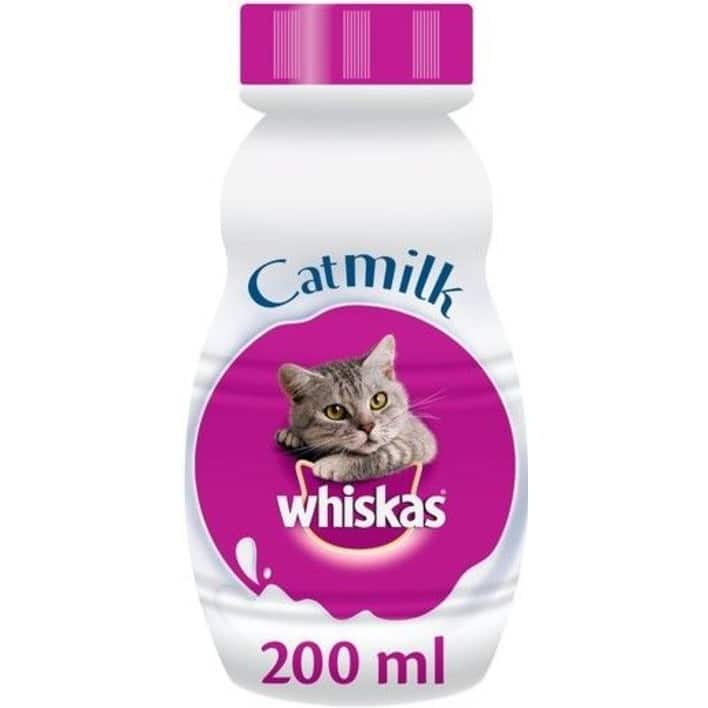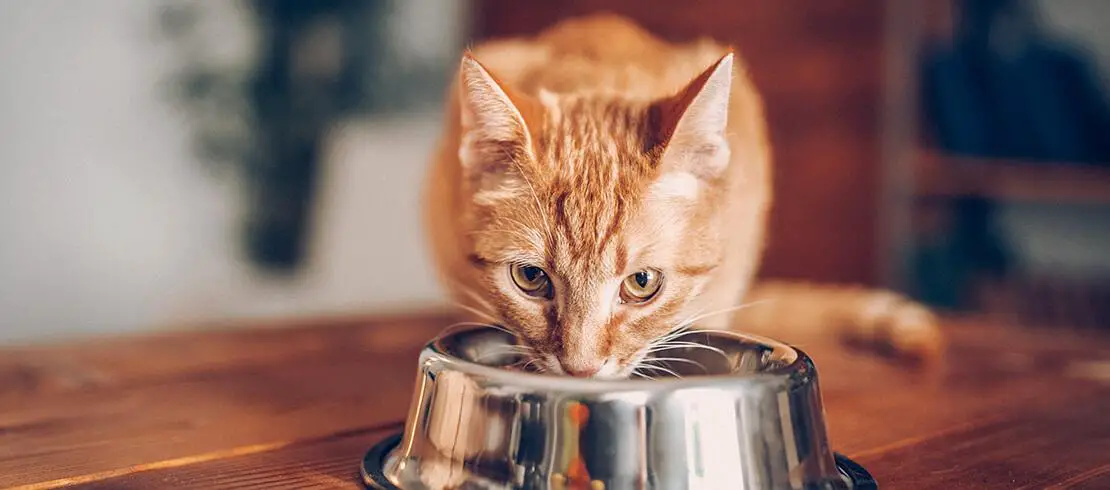
Nutrition (Guidelines)
All about your kitty’s appetite
Introduction
We are what we eat. Food is such an important part of keeping your cat healthy, and is also a hot topic of discussion. Whereas wild animals are able to piece together their own meal for the day, a cat kept indoors will be entirely dependent on the food you decide to give. So what’s the right choice?
Since feline nutrition is such a broad topic, we’ve broken things up into several sections so that you can easily find the information that is relevant for you. We will give guidelines for each life phase that cats go through: junior, adult, and senior. Use the links in the table of contents for quick navigation.
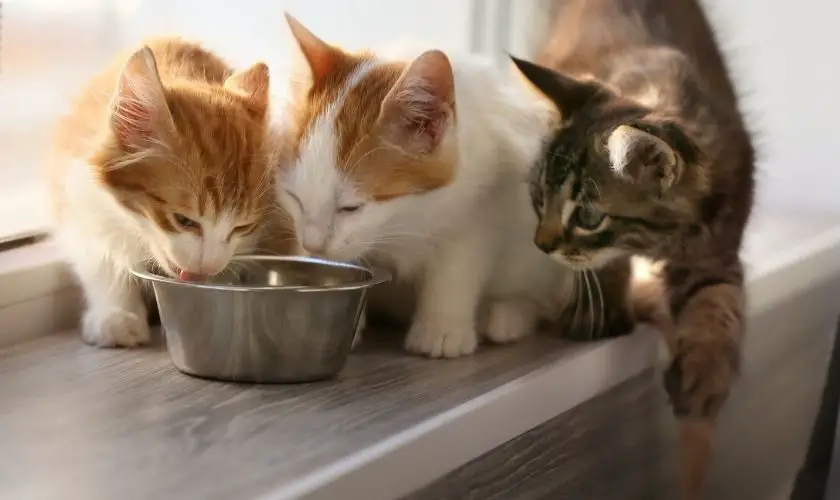
Part 1: Feeding kittens
In the first weeks, a kitten can survive solely on mother’s milk. It is near the four-week mark that kittens gradually start transitioning into eating solid foods. This process of switching over from liquids to solid food is called weaning. It roughly takes between four and ten weeks to completely wean a kitten off of milk.
If your newborn kitten doesn’t have a mom, you will have to get a replacement for mother’s milk. Don’t use regular cow-milk, as it is not balanced for pets. Pet stores and vets should be able to help you find the right milk product.
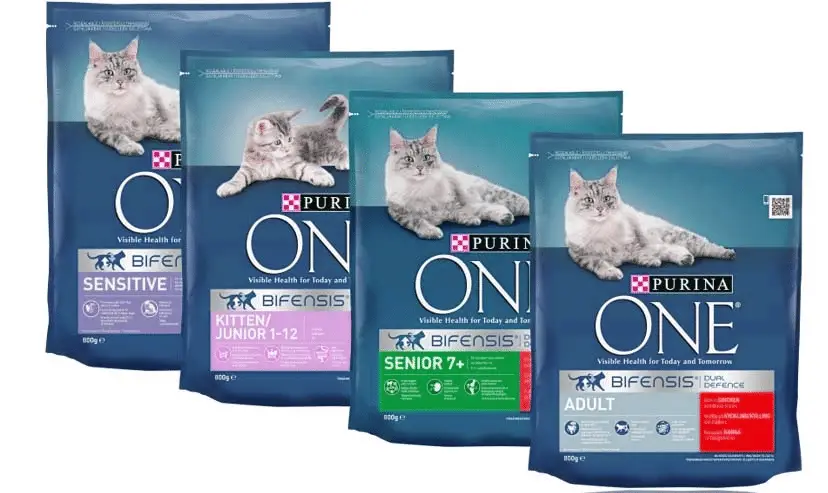
Your first bag of kitten food
Once the weaning phase has started, it’s time to buy your kitten its first bag of food. Do not make the mistake of grabbing any random bag!
Since kittens expend tremendous amounts of energy and their bodies need to grow rapidly, it should come as no surprise that they have entirely different nutritional needs when compared to adult and senior cats. Your little friend needs to eat plenty of high-quality protein and other building blocks to sustain all that growth, So if you want it to develop into a healthy adult, you would be smart to buy good quality cat food that is tailored to young kittens.
Almost every brand has a special bag for juniors, which almost always contains extra protein to sustain rapid growth. These meals also need to contain every other essential element. If just one is missing, that means your kitten won’t be able to fully develop into the beautiful adult cat that it is meant to become!
Buying a bag tailored to kittens ensures the proportions of the different macronutrients (carbs, proteins & fats) globally align with your little friend’s nutritional needs.
Related reading: Raising kittens? We have a series of articles by veterinarian Greg with tons of information on how to take care of newborn kittens: Part 1 (first 4 weeks) and part 2 (weeks 5 to 8).
Meal frequency
Although kittens have a very small stomach, they still need to eat plenty throughout the day.
Cats.org.uk recommends four times per day. More than four times is fine too, just make the portions smaller and be sure not to exceed the recommended amount of calories per day (see next paragraph)
Calories
As your kitten grows, so does her appetite! Young kittens need roughly 275 calories per day, with the bigger breeds consuming up to 100 additional calories. This is the equivalent of about 1,25 cups of kitten food spaced out over the day.
The box or bag should come with instructions, but you can also get a feel for the right portions by observing how often your new kitten goes to its food bowl.
The right food
Premium cat food costs a bit more, but the cheaper bags are often cheap for a good reason. Premium brands have the funds to consult real nutrition experts during product development.

When should a kitten start eating adult food?
Somewhere between 3 and 6 months, your young cat will want to start eating three bigger meals per day. By that time, your pet has grown quite a lot in size, and you would be forgiven for assuming that your feline friend is now ready for adult food. But parts that we can’t see are still developing: for instance, brain development will continue in the first six to twelve months. That’s why vets recommend junior food throughout the first 12 months of a cat’s life.
After the 12-month mark, you can start to gradually switch from kitten food to adult food. Kittens can easily adapt to different diets, but switching too abruptly could lead to problems. We have an article that explains how to do this, but the short version is that you want to gradually introduce the new food by mixing it into the old food. Start with a small amount, and increase it over a period of two weeks.
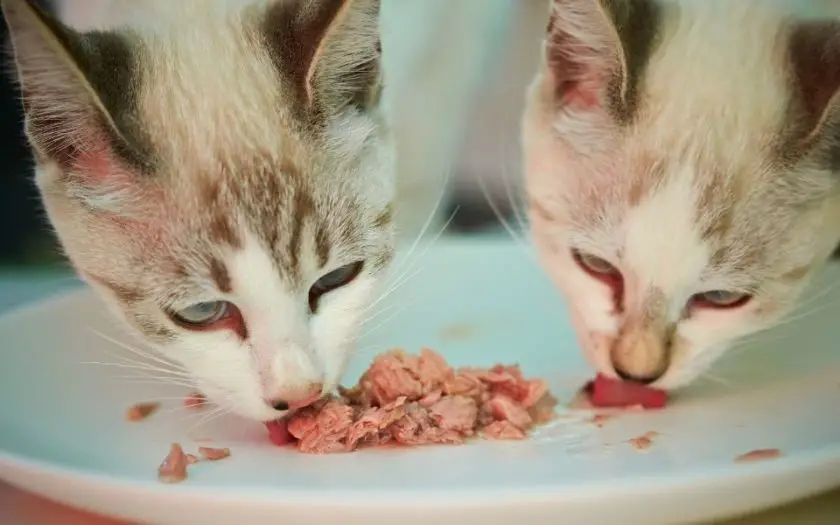
Part 2: Feeding adults
As your kitten grows into an adult cat, her energy levels and metabolism change. After the first year comes the time to switch out the bag of kitten kibble for a bag of adult food. It will be another seven lovely years before it’s time to switch over to senior food.
Recommended amount of food for adults
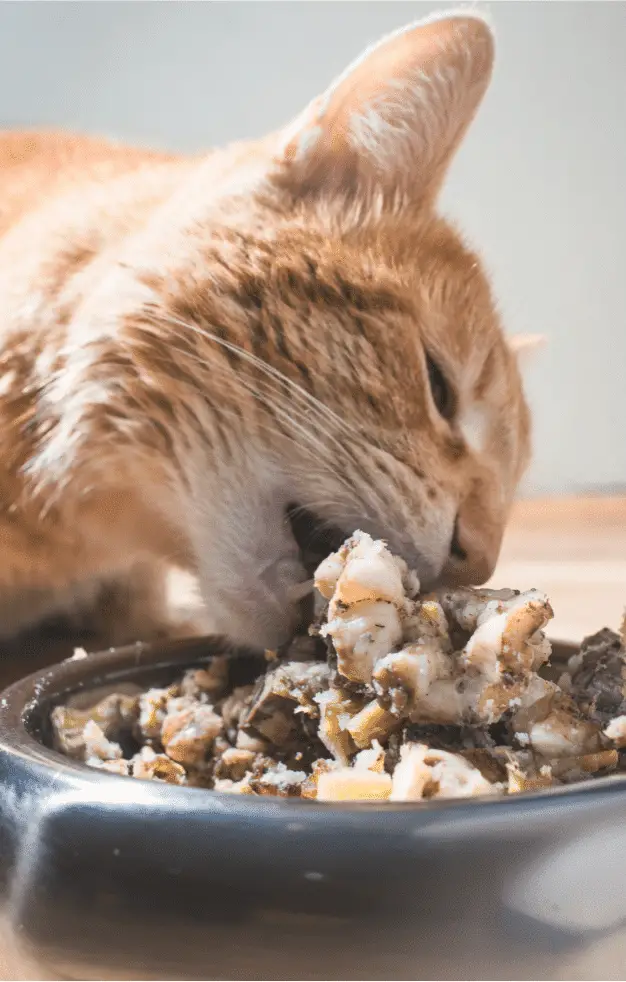
The recommended amount of food to give to adults is between 60-80 grams per day. Do not take these numbers as strict guidelines: this is a very rough estimate and things can vary significantly among different breeds. It is also dependent on what type of food you decide to give. In addition, some cats just happen to have a bigger appetite than others.
Daily maintenance energy requirement (adults)
There’s a mathematical formula to calculate the number of calories per kg of body weight. Plug in your cat’s weight in kilograms to find out how many calories it needs to eat per day:
- Lean adults: 100 kCal x Bw (kg)
- Obese-prone adults: 130 kCal x Bw (kg)
So for example a lean adult weighing 5,5 kg will need 100 * 5,5 = 550 calories (approximately) for daily maintenance.
Meal frequency
Cats are often conditioned from a young age to eat two or three times per day at set moments (breakfast, dinner etc.) This is convenient for most people, as their schedule is often far too busy to offer lots of small portions throughout the day.
While this is perfectly fine, the truth is that it doesn’t really matter how often you feed your cat. In fact, nearly every feeding pattern is okay, as long as your cat is comfortable with it and getting at least the required amount of calories.
However, the bare minimum is two meals per day. If you have limited time to spend and want to get as close to the natural feeding pattern as possible, you may opt to leave the bowl full at all times.
Auto-feeders
To make things even easier, you can buy an automatic feeder bowl with a release timer. These devices will allow you to feed your cat at predetermined times, even while you are away from home. Another major advantage to these machines is that create accurate portion sizes. This is especially useful when you are trying to help your cat lose weight.
Free feeding
Many owners opt to leave their cat’s bowl full at all times, only adding more food once it’s (near) empty. This is called free feeding. Free-feeding is problematic because cats do not easily feel when their stomachs are full. For this reason, free-freeding is one of the major contributors to the rise in cat obesity.
Part 3: Quality diets
The crucial aspect that will make or break any nutrition plan is the quality of the food. Despite what some brilliant marketing experts would have you believe, this is actually not an easy question to answer, and there is certainly not one brand or product that is better than all the others.
The first thing that complicates this question is the fact that every cat is unique. Instead of searching for the one food brand or type that is the best, the healthiest, and so on, a much more beneficial idea would be to find the best diet personally suited to your cat’s current personal circumstances.
Best ingredients
Felines are obligate carnivores; in layman’s terms, this means that they must consume at least some source of animal protein and fat in order to stay healthy. Great quality cat food always has one or multiple animal-based sources of protein high on its ingredient lists.
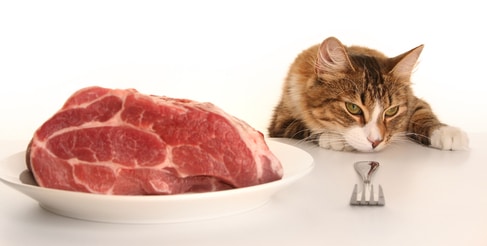
Grains have caught a lot of flak in recent years, most notably for their reputation as an unhealthy filler material used mainly by the cheaper food brands to cut costs and earn more money.
As a response, many brands came out with new grain-free cat food products. Some cat parents are even going as far as putting their pet on an entire diet of raw food and meat.
While these food types are controversial, vets generally recommend selecting food from a well-known brand. The reason is that the bigger brands are more likely to have hired qualified vets and true pet nutrition experts to help them compile a healthy recipe. You would also be wise to steer clear of any product that makes unrealistic marketing claims, for these kinds of products are often designed not for cat health, but for generating a healthy profit.
Grain-free
Grains do contain a lot of carbs & calories and little fat or protein, there is in reality very little scientific evidence to support these claims of them being unhealthy. Most grains actually contain some very vital and healthy minerals and vitamins. And despite what some sources would have you believe, cats can certainly digest them.
Grain-free food does have its place in the market, but it’s mostly useful for pets that have an allergic reaction or intolerance to grains. But those cases are indeed very rare.
To summarize: look beyond the attractive packaging, the flashy marketing claims, and the trends. Pick a solid food from a premium brand that matches the current life stage and circumstances your cat is in. Be sure to check that your food product can do what it says it does. Any claims made on the packaging should be verifiable.
Cat food quality guidelines
Several authorities in the world have their own guidelines when it comes to qualifying pet food. In the United Stats, a product has to match the nutrient distribution profiles that are established by the Association of American Feed Control Officials (AAFCO). When you see a reference to an AAFCO nutrient profile on a pet food label, you’re better assured that the “complete and balanced” claim is valid.
For a product to meet AAFCO standards, it has to contain all those nutrients at the recommended minimum level. The AAFCO has two nutrient profiles for cats: one for adult cat maintenance, and one for growth and reproduction (which includes kittens + pregnant and nursing cats).
We can’t list all the other guidelines here, but the adult maintenance profile sets the minimum level of crude protein at 26 percent on a dry matter basis. For more elaborate information, you can visit the AAFCO website.
Changing diets
When a cat has a medical problem like obesity, diabetes, periodontal disease or CKD, your veterinarian will probably prescribe a medical diet. These diets are specifically designed to support treatment due to their specific composition of macro-nutrients.
As you probably know, cats aren’t very fond of sudden changes. In fact, their little stomach can even get upset from any sudden change in diet. For this reason, vets recommend making the transition to a new diet as smooth as possible by gradually introducing it.
For detailed information and more helpful tips on this subject, check our suggestions for changing a cat’s diet.
Help! My cat is getting too fat
As with humans, obesity in cats can have multiple causes and just as many solutions. Think genetics, medical problems, overeating, changes in the daily energy maintenance requirement, and so on.
According to research by the University of Illinois most owners actually tend to underestimate the weight of their pets. One of the most common reasons for obesity among domesticated cats is overfeeding (and as a consequence, overeating). Over time this leads to significant gains in fat mass, which is associated with poor health and a number of diseases.
If your cat is too large and you want to change that, your first course of action should be to gradually limit meal frequency, portion sizes and/or the amount of treats that you’re giving. In most cases, this should have a sufficient impact on the amount of fat stored. Don’t give up if you do not see any result after a few weeks. The caloric deficit needs to be maintained for several months before you can start to see real results.
Tip: We have a full article on weight loss for cats.
Should these things fail, another possible solution is diet food. This special type of food contains less calories than the regular brands, but still includes all the essential nutrients that your cat needs in order to stay healthy.
As a final option, consider weighing the meals before handing them out. The packaging should tell you the appropriate amount in order for your cat to lose weight. You can keep track of progress with the vet or by measuring your cat on a scale every week.
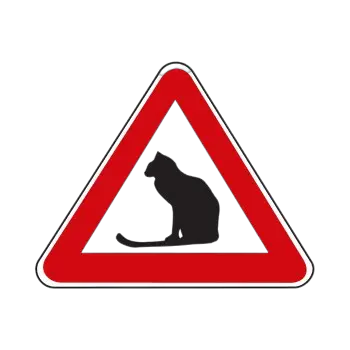
Frequently asked questions
While both tend to contain enough macronutrients, one of wet food’s major advantages is the added liquid which may help your cat to stay hydrated throughout the day. This can be beneficial especially for older cats that need to drink more due to chronic renal problems.
Other differences can be found in the higher amounts of carbohydrates in dry food (frequently even too high), and the type of proteinsource used which is often plant-based. Contrary to wet food, dry food also tends to be heavily processed, which is always less healthy than unprocessed meals. Some food scientists thus believe that dry food causes or contributes to many gastrointestinal problems.
On the other side of the medaillon, we suspect that dry food may be easier on the teeth. It can possibily help prevent periodontal disease by scraping away plaque as it is beeing chewed. However, there is currently no scientific evidence to support this theory.
Ingredient lists provide less insight into the quality of a cat food product than most people seem to believe. Nutrient content is what you should be looking at. A list of ingredients that sound great can easily be less nutritious than one that only has things that don’t sound so fancy. If a food company is really out for your money, they could even go so far as to add certain ingredients in miniscule amounts for no other reason than because they sound great when you read them on the packaging.
Next time you take a look at the list of ingredients, we recommend you also judge a product by the table of nutrients that should always be listed somewhere on the packaging.
No, that is not okay. Fish should never be a major part of any cat’s menu. Not only does it lack essential nutrients, but tuna in particular is dangerous in larger quantities because it is often contaminated by high levels of mercury. Mercury acts as a neurotoxin, even in small doses!
It’s fine to mix some canned tuna through a bowl of regular food as a treat sometimes, but do not make your cat’s entire diet consist of only tuna or any other type of fish.
The major thing that sets kitten food apart is that it often has extra protein. Food for seniors can differ in a number of ways:
– The individual pieces may be smaller, making them easier to digest.
– Can contain fewer calories (as older cats are less active, they tend to put on weight faster)
– Sometimes the amount of phosphorus in senior food is lowered, which can be beneficial for cats with kidney problems.
– Food for seniors may contain extra meat to improve the smell. This helps by making the food more appealing to older cats that are losing their sense of smell.
There is no consensus whether feeding your cat wet food and treats all the time will “spoil” them, in the sense that they would refuse to eat any other kind of food afterward. However, anecdotal evidence suggests your cat could become pickier over time.
Anything longer than a day is unusual. Consult your veterinarian as soon as possible. When cats stop eating there is always an underlying medical condition that needs to be diagnosed.
If you think your cat is not drinking enough, we have an article on dehydration tips.
Few animal species drink milk after reaching adulthood. Since cats do not have the necessary enzymes to digest the protein lactose that is present in dairy, they can get diarrhea after drinking milk. The same goes for eating dairy products such as yogurt, cheese, and cottage; They all contain lactose and are thus not recommended.
If you still want to give your cat milk, there are special milk products specifically tailored to cats, which do not contain lactose. These products are certainly not essential to a healthy diet, so you should think of cat milk as a tasty treat, rather than a nutritious meal.
